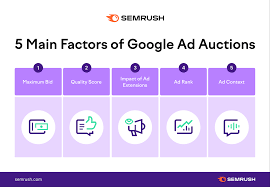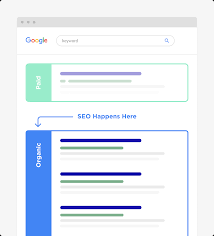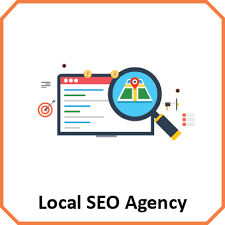Search Engine Marketing Strategies: Boosting Your Online Presence
In today’s digital landscape, search engine marketing (SEM) has become a vital component of any successful online marketing strategy. With millions of websites competing for attention, businesses need to employ effective SEM strategies to ensure their brand stands out in search engine results pages (SERPs). In this article, we will explore some key SEM strategies that can help boost your online presence and drive valuable traffic to your website.
- Pay-Per-Click (PPC) Advertising: PPC advertising is a popular SEM strategy that involves bidding on keywords relevant to your business and paying for each click on your ads. Platforms like Google Ads allow you to create targeted campaigns that appear above organic search results. By carefully selecting keywords, optimizing ad copy, and monitoring performance metrics, you can drive qualified traffic to your website while maximizing your return on investment (ROI).
- Search Engine Optimization (SEO): While PPC advertising offers immediate visibility, long-term success requires a solid SEO strategy. SEO focuses on optimizing your website’s content, structure, and technical aspects to improve its organic visibility in search engines. By conducting keyword research, creating high-quality content, optimizing meta tags and headers, and building authoritative backlinks, you can improve your website’s ranking in SERPs and attract organic traffic.
- Local Search Marketing: If you operate a brick-and-mortar business or have a specific geographical target audience, local search marketing is crucial. Optimizing your website for local searches involves creating location-specific landing pages with relevant keywords, ensuring accurate business information across online directories (such as Google My Business), and encouraging positive customer reviews. This helps potential customers find you when searching for products or services in their area.
- Content Marketing: Content marketing plays a vital role in both SEO and SEM strategies. By creating informative and engaging content such as blog posts, articles, videos, or infographics related to your industry or target audience’s interests, you can attract organic traffic, establish thought leadership, and increase brand visibility. Sharing this content through social media channels and email marketing campaigns further amplifies its reach and impact.
- Remarketing: Remarketing is a powerful SEM strategy that targets users who have previously visited your website but did not convert. By placing a tracking pixel on your website, you can display targeted ads to these users as they browse other websites or social media platforms. This helps to keep your brand top-of-mind and encourages them to return and complete their desired action.
- Mobile Optimization: With the increasing use of smartphones, mobile optimization is no longer optional but essential for SEM success. Ensure your website is mobile-friendly, loads quickly, and provides a seamless user experience across different devices. Google’s mobile-first indexing prioritizes mobile-friendly websites in search results, making it crucial to optimize for mobile users.
In conclusion, implementing effective search engine marketing strategies is essential for businesses looking to enhance their online presence and drive valuable traffic to their websites. By combining PPC advertising, SEO techniques, local search marketing, content marketing, remarketing tactics, and mobile optimization, you can achieve long-term success in the competitive digital landscape. Stay updated with industry trends and adapt your strategies accordingly to stay ahead of the curve and maximize your SEM efforts.
5 Frequently Asked Questions about Search Engine Marketing Strategies in English (UK)
- What are the best search engine marketing strategies?
- How can I optimize my website for search engines?
- What is the difference between SEO and SEM?
- How do I measure the success of my search engine marketing campaigns?
- How can I improve my website’s visibility in search engine results?
What are the best search engine marketing strategies?
When it comes to search engine marketing (SEM), there are several effective strategies that can help boost your online presence and drive valuable traffic to your website. Here are some of the best SEM strategies to consider:
- Pay-Per-Click (PPC) Advertising: PPC advertising allows you to bid on keywords and display targeted ads in search engine results. Platforms like Google Ads and Bing Ads offer robust tools for creating and managing PPC campaigns. By carefully selecting relevant keywords, optimizing ad copy, and monitoring performance metrics, you can drive qualified traffic to your website while maximizing your ROI.
- Search Engine Optimization (SEO): SEO focuses on optimizing your website’s content, structure, and technical aspects to improve its organic visibility in search engines. By conducting keyword research, creating high-quality content, optimizing meta tags and headers, building authoritative backlinks, and improving user experience, you can enhance your website’s ranking in search results and attract organic traffic.
- Local Search Marketing: If you have a physical business location or target a specific geographical area, local search marketing is crucial. Optimize your website for local searches by creating location-specific landing pages with relevant keywords, ensuring accurate business information across online directories (such as Google My Business), and encouraging positive customer reviews. This helps potential customers find you when searching for products or services in their area.
- Content Marketing: Content marketing plays a vital role in both SEO and SEM strategies. By creating informative and engaging content such as blog posts, articles, videos, or infographics related to your industry or target audience’s interests, you can attract organic traffic, establish thought leadership, increase brand visibility, and encourage social sharing.
- Remarketing: Remarketing allows you to target users who have previously visited your website but did not convert. By placing a tracking pixel on your site, you can display targeted ads to these users as they browse other websites or social media platforms. This helps to keep your brand top-of-mind and encourages them to return and complete their desired action.
- Mobile Optimization: With the increasing use of mobile devices, it’s crucial to optimize your website for mobile users. Ensure your site is mobile-friendly, loads quickly, and provides a seamless user experience across different devices. Google’s mobile-first indexing prioritizes mobile-friendly websites in search results, making mobile optimization essential for SEM success.
Remember, the best SEM strategies may vary depending on your business goals, target audience, industry, and budget. It’s important to continuously monitor and analyze the performance of your campaigns and make adjustments as needed to maximize results.
How can I optimize my website for search engines?
Optimizing your website for search engines is crucial to improve its visibility and attract organic traffic. Here are some key steps you can take to optimize your website:
- Conduct Keyword Research: Start by identifying relevant keywords that your target audience is likely to use when searching for products or services related to your business. Use keyword research tools to find popular and low-competition keywords that you can incorporate into your content.
- Optimize On-Page Elements: Ensure that your website’s on-page elements are optimized for search engines. This includes optimizing meta titles, meta descriptions, headers (H1, H2, etc.), and URL structures with relevant keywords. Make sure the content is well-structured, easy to read, and provides value to users.
- Create High-Quality Content: Develop unique and informative content that aligns with your target audience’s interests and addresses their needs. Incorporate relevant keywords naturally throughout the content while maintaining readability. Regularly update your website with fresh content to keep it engaging and encourage search engine crawlers to revisit.
- Improve Website Speed: Website loading speed is a crucial ranking factor in search engine algorithms. Optimize images by compressing them without compromising quality, minify CSS and JavaScript files, leverage browser caching, and choose a reliable hosting provider to ensure fast loading times.
- Mobile Optimization: With the increasing use of mobile devices, optimizing your website for mobile users is essential. Ensure your website has a responsive design that adapts seamlessly across different screen sizes. Test its mobile-friendliness using Google’s Mobile-Friendly Test tool.
- Build Quality Backlinks: Earn high-quality backlinks from reputable websites in your industry or niche as they signal credibility and authority to search engines. Focus on creating valuable content that others would naturally want to link back to or consider reaching out for guest blogging opportunities.
- Improve User Experience (UX): Search engines prioritize websites that provide a positive user experience. Make sure your website is easy to navigate, has clear call-to-action buttons, and loads quickly. Optimize for user engagement by reducing bounce rates and increasing time-on-site through engaging content and intuitive design.
- Utilize Schema Markup: Implement structured data markup (schema markup) on your website to provide search engines with additional context about your content. This can help improve visibility in search results by enabling rich snippets like reviews, ratings, or event information.
- Monitor Analytics: Regularly monitor your website’s performance using web analytics tools like Google Analytics. Analyze key metrics such as organic traffic, bounce rates, conversion rates, and keyword rankings to identify areas for improvement and measure the effectiveness of your optimization efforts.
Remember that search engine optimization is an ongoing process. Stay updated with industry trends, algorithm changes, and best practices to adapt your strategies accordingly. By implementing these optimization techniques consistently, you can enhance your website’s visibility in search engine results and drive organic traffic to your site.
What is the difference between SEO and SEM?
SEO (Search Engine Optimization) and SEM (Search Engine Marketing) are two distinct but interconnected strategies used to improve a website’s visibility in search engine results. While they share the common goal of driving organic traffic to a website, there are key differences between the two:
- Definition: SEO refers to the practice of optimizing a website’s content, structure, and technical aspects to improve its visibility in organic search engine results. It focuses on increasing organic (unpaid) traffic by improving the website’s ranking in search engine results pages (SERPs). On the other hand, SEM encompasses all strategies used to increase a website’s visibility in search engines, including both organic methods (SEO) and paid methods (such as PPC advertising).
- Nature: SEO is primarily concerned with optimizing a website’s on-page and off-page elements to improve its ranking in SERPs. It involves activities like keyword research, content creation, link building, and technical optimization. SEM, on the other hand, encompasses a broader range of activities that include not only SEO but also paid advertising methods like PPC campaigns.
- Cost: SEO is generally considered an organic strategy that does not require direct payment for clicks or impressions. However, it does require investment in terms of time, resources, and expertise to implement effective optimization techniques. SEM includes paid advertising methods like PPC campaigns where businesses pay for each click or impression their ads receive.
- Timing: SEO is a long-term strategy that takes time to show significant results. It requires consistent effort and ongoing optimization to maintain and improve rankings over time. On the other hand, SEM can provide immediate visibility through paid advertising campaigns. Businesses can create PPC ads and start appearing at the top of SERPs within a short period.
- Control: With SEO, businesses have limited control over how search engines rank their websites organically. While optimization efforts can influence rankings, search engines ultimately determine where websites appear in SERPs. In contrast, SEM provides more control as businesses can bid on specific keywords and create targeted ads to appear in search results.
In summary, SEO focuses on optimizing a website’s organic visibility through various techniques, while SEM encompasses both organic and paid methods to increase a website’s visibility in search engines. While SEO is a long-term strategy that requires ongoing effort, SEM offers more immediate visibility through paid advertising campaigns. Both strategies are important for businesses looking to enhance their online presence and attract valuable traffic to their websites.
How do I measure the success of my search engine marketing campaigns?
Measuring the success of your search engine marketing (SEM) campaigns is crucial to understand their effectiveness and make informed decisions for optimization. Here are some key metrics and methods to consider when measuring the success of your SEM campaigns:
- Click-Through Rate (CTR): CTR measures the percentage of people who clicked on your ad after seeing it. A higher CTR indicates that your ad copy and targeting are resonating with your audience. Calculate CTR by dividing the number of clicks by the number of impressions and multiplying it by 100.
- Conversion Rate: Conversion rate measures the percentage of users who completed a desired action on your website, such as making a purchase, filling out a form, or subscribing to a newsletter. It helps gauge how well your landing page and overall user experience are optimized for conversions.
- Cost per Click (CPC): CPC represents the average amount you pay for each click on your ads. Monitoring CPC helps you understand how efficiently you’re spending your budget and whether adjustments need to be made in keyword bids or ad targeting.
- Return on Ad Spend (ROAS): ROAS measures the revenue generated from your ads compared to the cost spent on them. It provides insights into the profitability of your SEM campaigns and helps determine if they are delivering a positive return on investment.
- Quality Score: Quality Score is a metric used by platforms like Google Ads to assess the quality and relevance of your ads, keywords, and landing pages. A higher Quality Score can lead to better ad positions, lower costs per click, and improved campaign performance.
- Keyword Rankings: Monitoring keyword rankings allows you to assess how well your website is performing in organic search results for targeted keywords. Tools like Google Search Console or third-party SEO software can help track keyword rankings over time.
- Website Traffic: Analyzing overall website traffic can provide insights into the impact of your SEM campaigns. Tools like Google Analytics allow you to track the number of visitors, their behavior on your site, and the sources driving traffic (organic search, paid ads, etc.).
- Return on Investment (ROI): ROI measures the profitability of your SEM campaigns by comparing the revenue generated to the cost invested. By attributing revenue accurately to specific campaigns or keywords, you can evaluate their effectiveness and make data-driven decisions.
Remember that measuring success goes beyond individual metrics. It’s important to analyze the data holistically and consider how different metrics interact with each other. Regular monitoring and analysis will help you identify areas for improvement and refine your SEM strategies for better results.
How can I improve my website’s visibility in search engine results?
Improving your website’s visibility in search engine results requires a combination of effective search engine optimization (SEO) strategies. Here are some key steps you can take to enhance your website’s visibility:
- Keyword Research: Conduct thorough keyword research to identify the terms and phrases that your target audience is using to search for products or services similar to yours. Use keyword research tools to find relevant keywords with high search volume and relatively low competition.
- On-Page Optimization: Optimize your website’s on-page elements, including meta tags (title tags, meta descriptions), headers, and URL structures, using your targeted keywords. Ensure that your content is well-structured, easily readable, and provides value to users.
- High-Quality Content: Create compelling and informative content that aligns with the needs and interests of your target audience. Focus on delivering value through blog posts, articles, videos, infographics, or any other format that suits your industry and audience preferences.
- Link Building: Develop a strong link-building strategy by earning backlinks from authoritative websites in your industry. Seek opportunities for guest blogging, partnerships, or collaborations with influencers or industry experts to build quality backlinks that signal credibility to search engines.
- Mobile Optimization: With the increasing use of mobile devices for internet browsing, ensure that your website is fully optimized for mobile users. Responsive design, fast loading times, and easy navigation are crucial factors in providing a seamless mobile experience.
- User Experience (UX): Focus on delivering an exceptional user experience on your website. Ensure it loads quickly across devices, has intuitive navigation menus, clear call-to-action buttons, and provides valuable information without overwhelming users with excessive ads or pop-ups.
- Technical SEO: Pay attention to technical aspects such as crawlability, indexing, XML sitemaps creation/submission to search engines like Google Search Console or Bing Webmaster Tools), fixing broken links or error pages (404 errors), and optimizing your website’s speed.
- Local SEO: If you have a physical location or serve a specific geographic area, optimize your website for local searches. Claim and optimize your Google My Business listing, include your address and phone number on your website, and encourage customers to leave reviews.
- Social Media Promotion: Utilize social media platforms to promote your content, engage with your audience, and drive traffic back to your website. Share valuable content, interact with followers, and encourage social sharing to increase visibility and reach.
- Regular Monitoring and Analysis: Monitor your website’s performance using tools like Google Analytics. Analyze key metrics such as organic traffic, bounce rates, conversion rates, and keyword rankings to identify areas for improvement and adjust your strategies accordingly.
Remember that improving visibility in search engine results takes time and consistent effort. Stay up-to-date with industry trends, algorithm updates, and user behavior changes to adapt your strategies effectively.




